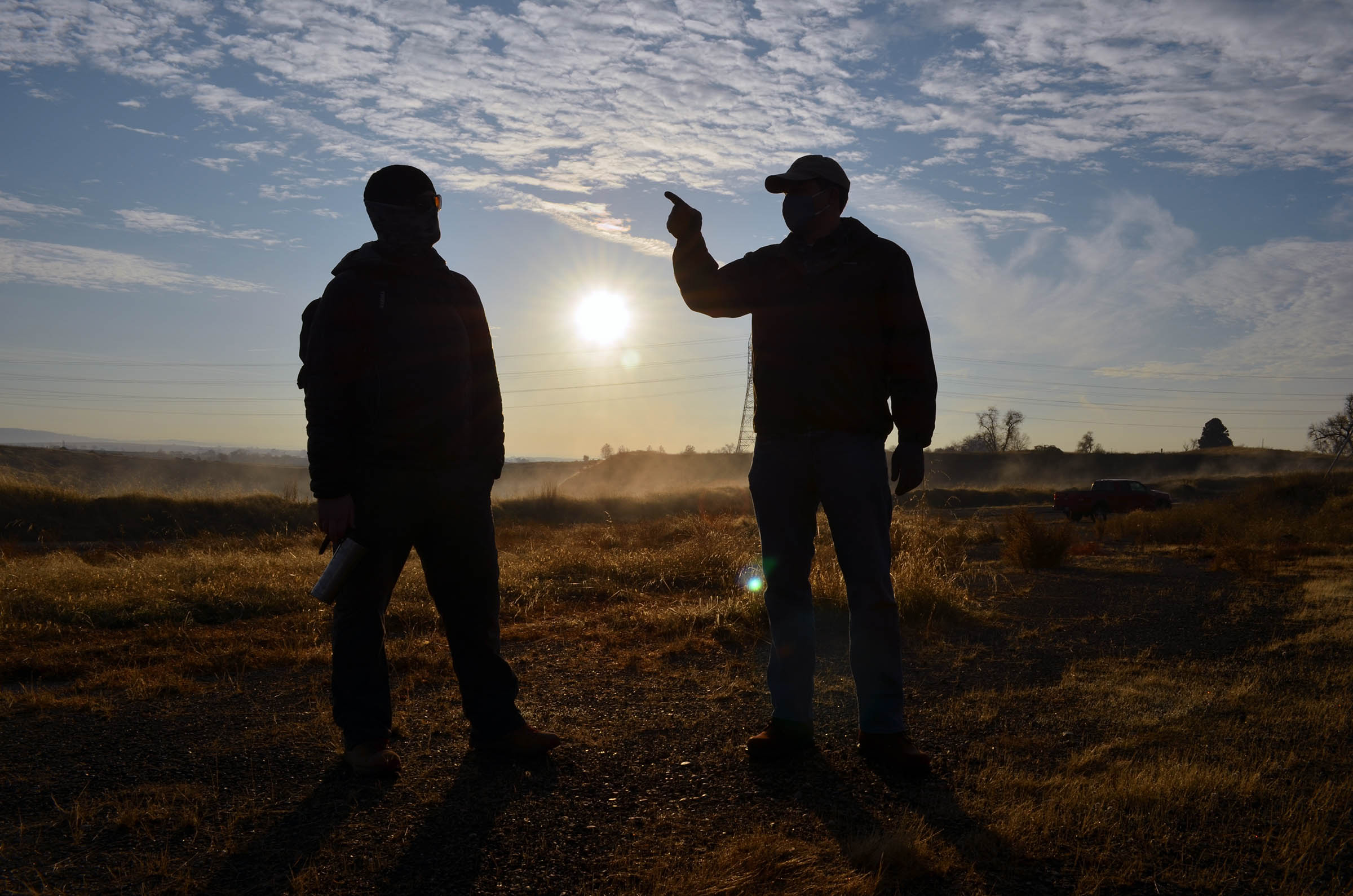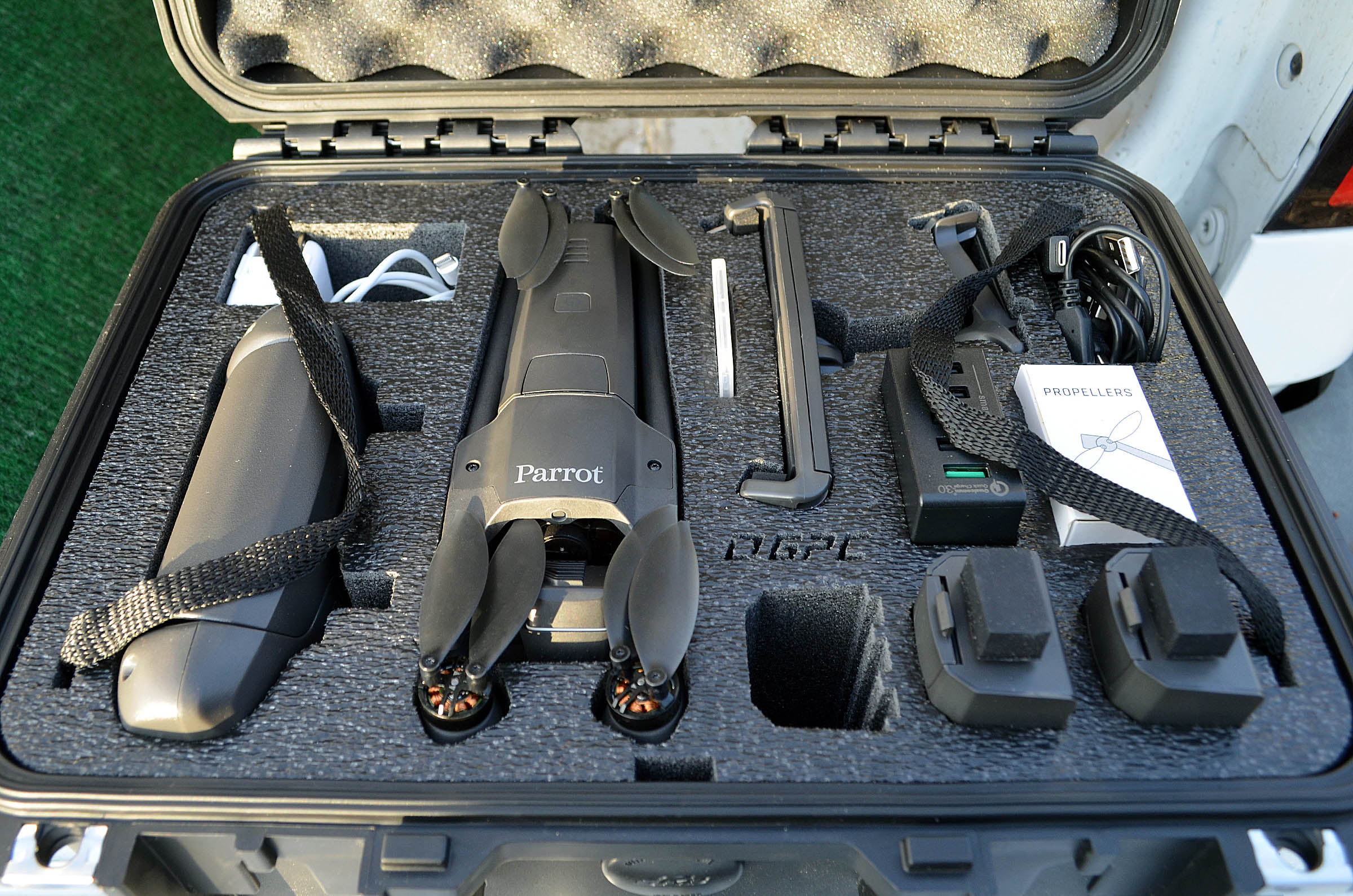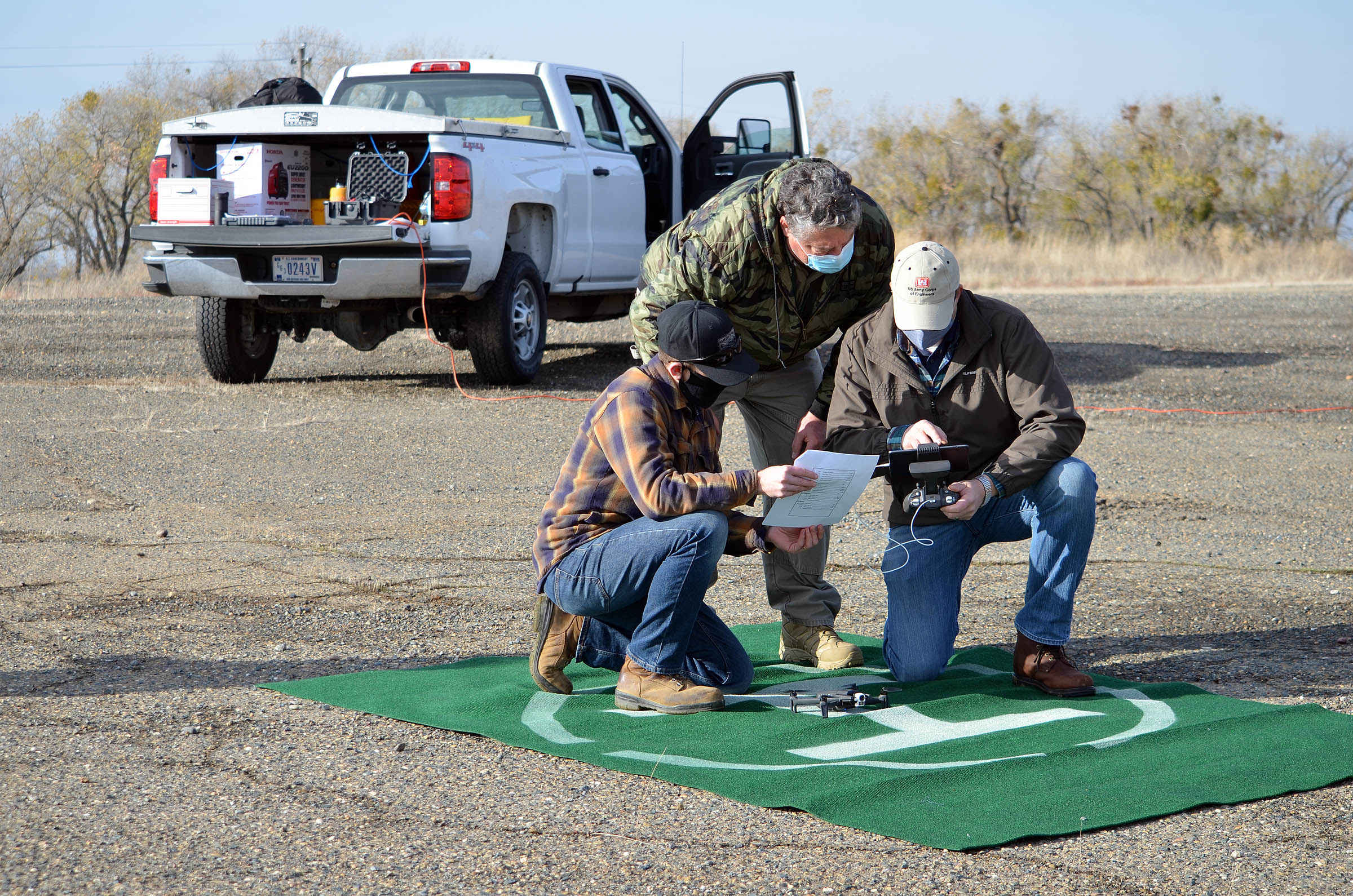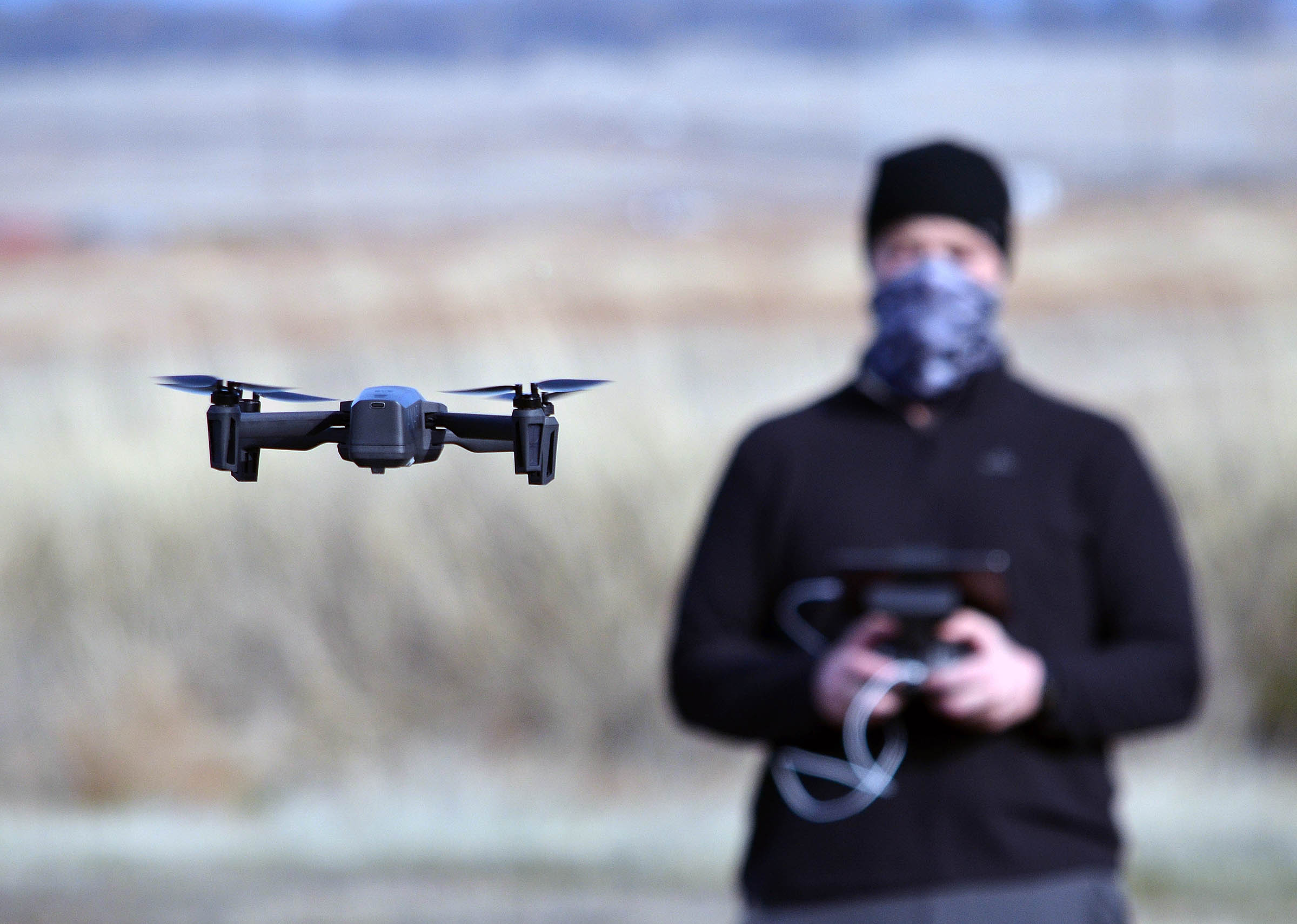It was a seriously chilly morning, at least by California standar ds, when U.S. Army Corps of Engineers Sacramento District Public Affairs Specialists John Prettyman and Luke Burns arrived with the sun at Prairie City recreation area near Folsom on Dec. 16. It was a perfect day for training. Windless, the sun burning off light ground fog, a smattering of layered clouds in the distance.
ds, when U.S. Army Corps of Engineers Sacramento District Public Affairs Specialists John Prettyman and Luke Burns arrived with the sun at Prairie City recreation area near Folsom on Dec. 16. It was a perfect day for training. Windless, the sun burning off light ground fog, a smattering of layered clouds in the distance.
The District’s Unmanned Aerial System Team comprised of Dave Mello, Casey Young and Zach Roy were waiting at the site, ready to take Burns and Prettyman through a full day of training on a new UAS.
Burns and Prettyman watched intently as Mello opened a small, hard-shell case and introduced them to the District’s newest asset – a Parrot Anafi UAS. With propeller arms extended for flight, it’s barely the size of a small Frisbee, but despite its size, the UAS will pack a mighty punch for USACE. The Parrot is equipped with a 21 Megapixel camera, High Dynamic Range 4K Ultra High Definition video, and even thermal imaging.
While Burns and Prettyman had already attended a weeklong USACE virtual classroom t raining, this would be their first time to get outside and put the UAS into flight. And upon completing the day’s training, they would join the District’s Unmanned Aerial System Team as USACE-certified UAS pilots. Each would also earn the status of certified Visual Observer, designated to keep an eye on airspace when another pilot operates the UAS.
raining, this would be their first time to get outside and put the UAS into flight. And upon completing the day’s training, they would join the District’s Unmanned Aerial System Team as USACE-certified UAS pilots. Each would also earn the status of certified Visual Observer, designated to keep an eye on airspace when another pilot operates the UAS.
If it sounds a bit serious, it is. With countless airports, low flying aircraft, obstacles like powerlines and communications towers, plus commercial flight zones loaded with strict rules enforced by the Federal Aviation Administration, USACE, cannot simply hand over a multi-thousand-dollar UAS and say, “Go get us some photos.” In fact, proper UAS training is so significant, it complies with both FAA and Army Aviation regulations for operating small unmanned aircraft.
“We want to make sure we fly legally, we fly safe, and we fly effective. We have multiple sets of eyes looking at every step along the way, from the mission planning to the actual flight” said Mello.
Mello said he was pleased to be training Burns and Prettyman, because adding UAS team members will expand the District’s capabilities on projects like mapping, inspections, and informational products.
“The Public Affairs Office has worked with us on informational projects for Sacramento Weir, Sacramento River East Levee, Dike 8 and at New Hogan Lake. It just seemed like a natural extension of the work we are doing to bring in PAO,” said Mello.
 Burns and Prettyman also voiced satisfaction at joining the UAS Team but were especially excited about what the day’s training would mean for the Public Affairs Office.
Burns and Prettyman also voiced satisfaction at joining the UAS Team but were especially excited about what the day’s training would mean for the Public Affairs Office.
“We’ve been trying to get a UAS for, what, four years?” Burns asked. “The majority of the great, cutting-edge products we’ve seen in the past few years has been from UAS footage.”
Burns cited the near disaster that took place at Oroville Dam in February 2017, when the main and emergency spillways were damaged. UAS footage of the event was captivating and shot from dramatic angles that could only be captured by a UAS, or a helicopter.
Another benefit of UAS, is that they can often fly in areas a helicopter cannot, and the cost of operation is not even close. A quick check online shows the average cost of helicopter rentals is between $300 – $500 per hour.
“It’s exciting. The Public Affairs team will soon be able to provide cutting edge photos and videos that help our clients and the public better understand the size and scope of USACE projects,” said Burns.
Mello added that due to the pandemic, the UAS was proving extremely valuable for a wide array of informational products.
“Due to COVID, we couldn’t do site visits, hold site meetings, or bring people into the office. But with the UAS, we were still able to collect and share valuable imagery that provided context to our Project Delivery and Design teams as well as for our partner agencies,” said Mello.
After taking the UAS for several rounds of training flights, Prettyman flawlessly landed the Parrot UAS, shook his head and smiled.
“This is just what we needed,” said Prettyman. “The bottom line is that next year, you’re going to be seeing a lot more aerial coverage of our major projects. You’ll be seeing an entirely different perspective.”